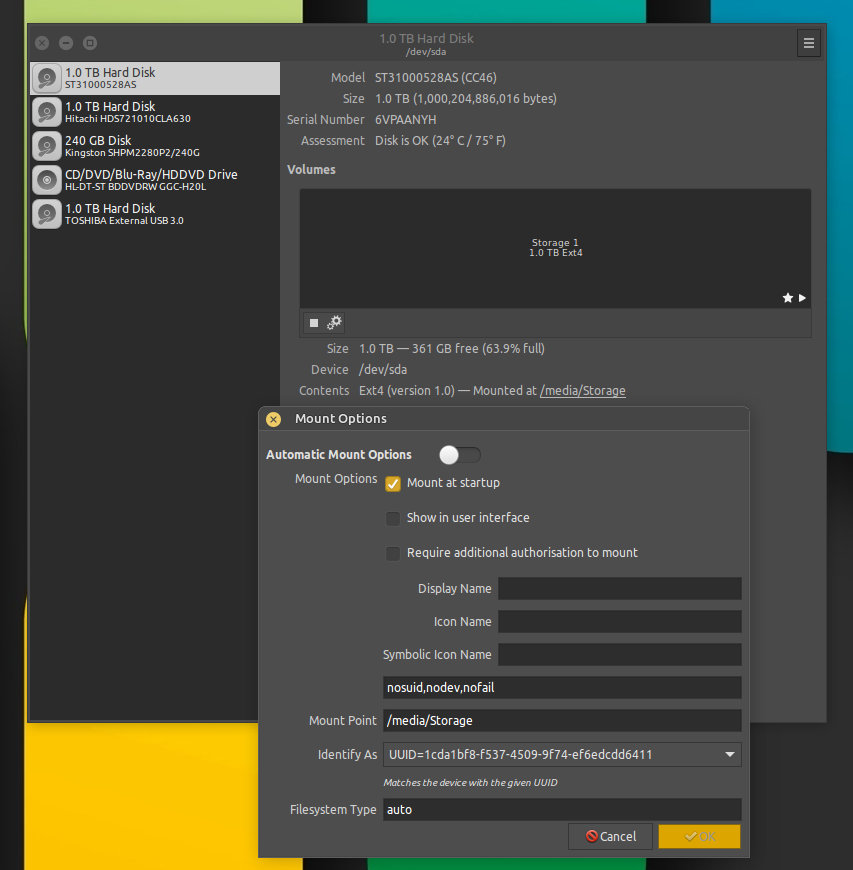DogsofJune
Supreme [H]ardness
- Joined
- Nov 7, 2008
- Messages
- 4,639
That was my issue when I encountered this with Plex.It sounds like the drives aren't mounted correctly?
ThatITGuy, are you using automount or are you trying to mount permanently using fstab (You can use the 'Disks' GUI as opposed to editing fstab BTW)? If you are trying to use automount and you reboot the machine, they won't be seen by Plex until you double click on them and effectively 'automount' the drives, once automounted they will appear on the desktop and should be visible to Plex.
![[H]ard|Forum](/styles/hardforum/xenforo/logo_dark.png)
